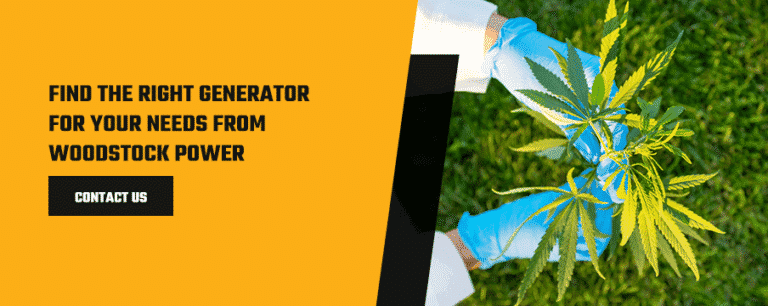Medical Cannabis Environment Best Management Practices Guide
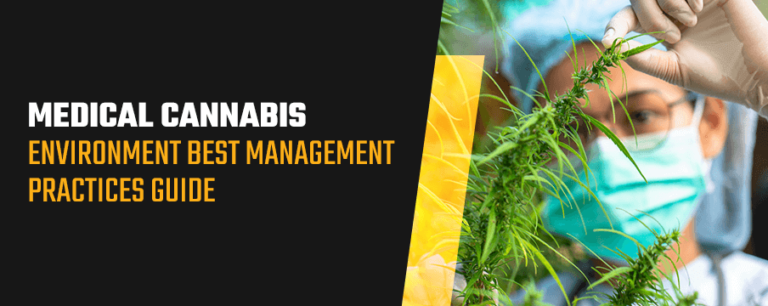
In the seedling and vegetation stages of a marijuana plant, many cannabis facilities use 24 hours of high-intensity light. Since the amount of light a plant receives in these early phases directly impacts growth speed, a constant light source is key to maximizing output. Cannabis grown indoors requires an average of $396 per pound to produce, and most commercial production facilities can’t afford to waste a few hours housing plants in the dark.
If a power outage occurs and lasts several days, the plants’ internal clocks get disrupted. They’ll begin to flower too early and cut into your yield. Constant, uninterruptible energy is just one of the ingredients necessary to remain profitable and produce top-quality crops.
Best Practices All Medical Cannabis Facilities Should Follow
When creating the perfect growing conditions, you need to account for precise temperatures, relative humidity levels and airflow patterns. You also need lighting intensities 500 times the recommended reading light levels. In an increasingly competitive market, with state regulations still up in the air, commercial medical cannabis facilities need to run a tight operation to avoid cost pits and wasted energy. When handling these delicate crops at the commercial level, your facility should adopt several best practices across four categories:
1. Energy Supply Best Practices
Marijuana growers, manufacturers and processing plants, especially large-scale operations, use a lot of power. Lighting, HVAC systems, automated feeding equipment and other tools of the trade each demand a lot of energy. Facilities that process hemp, handle distillation or refine cannabis byproducts also consume energy through their equipment needs.
The energy costs for an indoor cannabis grow room range from 20%-50% of total operating expenses. To understand just how much that is, compare this number to mid-to-large-sized breweries, which only need to dedicate 6%-12% to energy costs. Further, grow rooms use about 10 times as much power as a typical office building. Many medical marijuana facilities put a strain on their local power grids as a result.
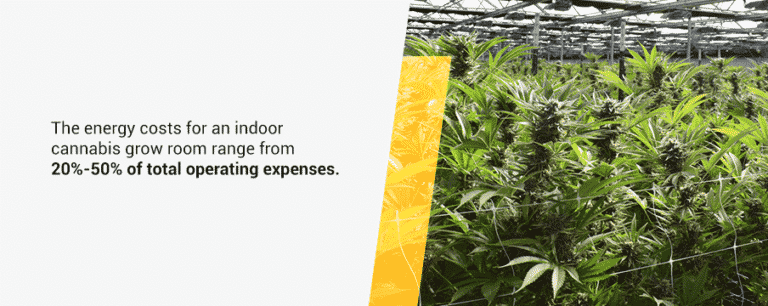
Because energy use is crucial to operations and racks up such a huge bill, it’s critical to manage it efficiently. As a cannabis facility, you can gain many benefits from reducing your energy consumption.
Those that achieve energy efficiency can reduce costs and position themselves for long-term success in an increasingly price-competitive market. The marijuana industry has been linked to many small-scale power outages as it expands. You can limit your risk and boost your public relations by taking steps to prevent outages. Finally, reducing your energy consumption can benefit the environment. In the process, you can take advantage of government and utility program incentives to protect the environment.
When it comes to efficient energy management, you’ll probably need a combination of offsite and onsite grow room power supply.
Offsite Power Supply
Most of the energy powering your facility will likely come from offsite generation. Whatever power plant generates the electricity for the residences and businesses in your area will probably be your primary supply. However, some grow houses exist in relatively remote areas where power lines can’t reach, or that won’t have power restored quickly after an outage. If that’s the case, you’ll have to rely more heavily on onsite generation.
Because of the high level of energy usage required at grow rooms and other industrial facilities, you should work closely with your offsite provider to create a power usage plan. It’s a good idea to consult with them before enacting any massive changes to your energy usage. Adding new equipment can draw more power from the grid. If utilities aren’t expecting this, it can cause an outage. They may encourage you to meter your electricity usage, so you can see how much of your energy goes to your lighting, HVAC, powered equipment and other areas of your operation.
Most of the time, offsite power generation comes from nuclear, coal-fired or diesel-fired power plants. Through your utilities or a contracted provider, you can purchase a certain percentage of your energy to come from renewable sources. Depending on your location’s natural resources, you may have access to hydroelectric, geothermal, solar, wind or tidal energy sources. While this won’t necessarily limit your consumption, it has the potential to reduce your impact on the environment significantly.
Onsite Power Supply
Onsite power generation is another strategy many facilities use to limit their strains on power supplies and become more efficient. These systems have the advantage of eliminating transmission loss, which wastes up to 5% of all energy produced. Renewable energy generators can help reduce energy costs and environmental impact while offsetting energy costs from utility companies.
Grow houses, hemp processors, cannabis oil distilleries and refineries have several options for onsite energy supply, including:
- Diesel generators: Diesel generators can be used as backup power supplies and prime power generators for your operations. They can be a powerful ally to your facility. If considering a diesel generator, note they require a lot of fuel and often require onsite storage.
- Natural gas generators: Natural gas generators burn quieter, and are cleaner and more environmentally friendly. They require less cleaning, and natural gas is usually cheaper than diesel.
- Combined heat and power (CHP) systems: CHP systems rely on natural gas generators to produce electricity. The technology will also repurpose the waste and heat generated in the process to offset a facility’s HVAC and carbon dioxide (CO2) needs. This efficiency can be of particular use in grow houses, which need precise CO2 levels and temperatures for optimal growing conditions and maximum yields.
- Solar generators: Solar photovoltaic systems, or solar panels, generate electricity using sunlight. Most cannabis facilities that use this method of generation will place panels on the roof. You can also investigate ground-mounted panels or solar panels in parking lots. The economic benefits of using solar power depend on regulations in your area, so consult with your utility provider when implementing solar panels. They have higher upfront costs and can’t be used in locations without enough sunlight. However, where feasible, you can gain the advantage of no fuel costs to power the generators. They also don’t stop working due to a lack of fuel.
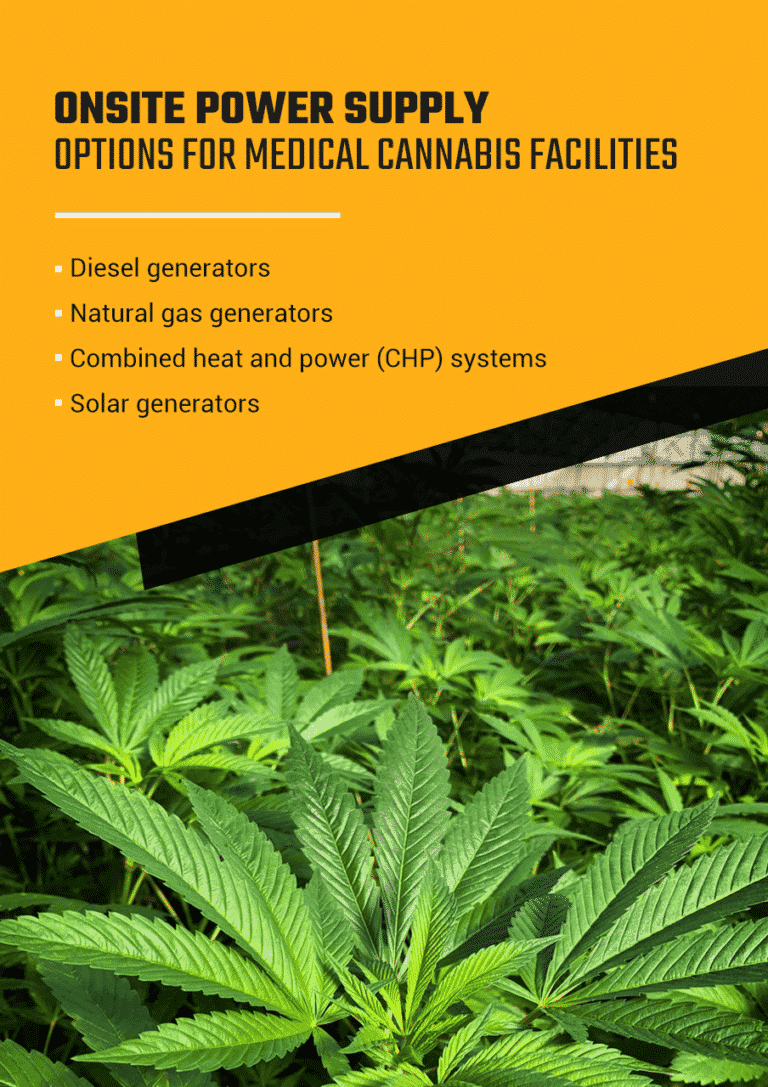
2. Lighting Best Practices
Cannabis plants have precise lighting needs. If you’re growing indoors, you need to replicate natural sunlight patterns and optimal conditions for the plants to grow. Indoor facilities have this major advantage over outdoor spaces or greenhouses because they can keep light levels down to a science. Cloudy days and weakened sunlight in the winter months won’t affect indoor grow houses. The lighting needs for cannabis plants can change throughout their life cycle, which encompasses three phases:
- Seedling: In the early stages of growth, which last three days to 10 days, plants prefer 18 hours to 24 hours of lighting per day.
- Vegetative: As the plants develop into the vegetative stage, which lasts four weeks to eight weeks, they still need between 18 hours and 24 hours of light each day. In general, this stage uses 600 watts (W) of lighting per four square feet of plants. They do best with metal halide lighting fixtures, which produce a red- and blue-dominated spectrum.
- Flowering: In the six weeks to 10 weeks of the flowering stage, lighting needs decrease. These plants thrive with only 12 hours of light each day, replicating autumn sunlight conditions. However, the standard practice requires 1,000W of lighting per four square feet. They prefer high pressure sodium (HPS) fixtures, which produce a more yellow spectrum.
To keep these lighting conditions perfect, most facilities use cannabis timers. These investments are inexpensive ways to automate your lighting, so it goes on and off regularly. Some timers will connect to individual lights, while more expensive lighting system controllers can time lighting needs across your facility in one central location.
Another best practice here is to use adjustable light fixtures. The more light a plant receives, usually measured in micromoles, the faster it grows. So, it often makes sense to move lights as close as possible to the plant. As the plants grow, lights should be pulled back to prevent burning.
Lighting Efficiency
With 38% of a cannabis facility’s energy usage dedicated to lighting, improving lighting energy demands should be a top priority. In vegetative rooms, LED lighting has proven a suitable alternative, and can save a facility up to 50% of their lighting energy costs compared to the standard lighting practices.
In flowering rooms, lighting opportunities are more complex. One option is to replace standard HPS fixtures with double-ended 750W or 800W HPS fixtures, achieving 20%-25% energy savings. While they cost double the price of traditional fixtures, they outlast standard HPS fixtures significantly. Another option is to use LEDs or a combination of LEDs and HPS lights. While more expensive than double-ended HPSs, LEDs can offer other benefits like giving off less heat, allowing for closer mounting to the plants.
3. Air Movement Best Practices
The HVAC needs of a cannabis grow facility are complicated because the plants need temperatures between 70 degrees and 85 degrees Fahrenheit. Also, each stage of the plant requires a different relative humidity level. One aspect of the HVAC system that is crucial to a successful crop is air movement. A constant airflow over the plants prevents pests and fungus. Fungus gnats and spider mites will find it more difficult to fly when the air isn’t stagnant. Fans also dry the topsoil, making it harder for fungus gnats and mold to breed.
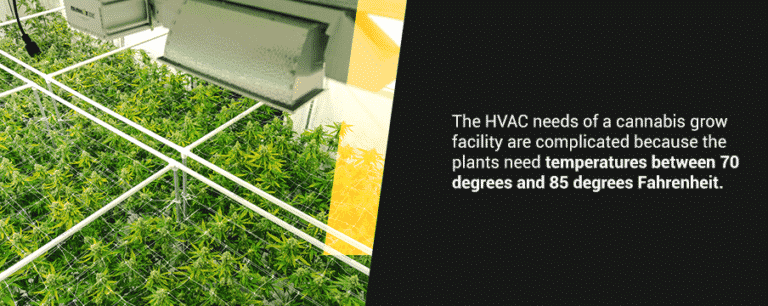
Breezy conditions also create a healthier environment for the plants by replicating natural conditions. The plants transpire, or release water vapor into the air, which requires a certain amount of wind to carry away the excess moisture. By allowing plants to expel humidity, they can take in more water and nutrients at the roots. Also, when plants sway back and forth from a tender age, their stems grow sturdier. By the time they grow tall and flower, they will be able to stand upright.
Fans also allow for temperature and humidity control by equalizing the air to prevent hot pockets of air below the canopy. Steady air movement allows for the even distribution of CO2 and humidity.
While the industry has yet to establish baseline standards for airflow and airspeed, there are plenty of best practices to keep in mind. Your grow room may need a combination of oscillating fans, an exhaust system and destratification fans. Oscillating fans aimed above and below the plants will ensure a steady airflow for many operations. Exhaust fans will exchange old, stale air for fresh outdoor air and help to replenish CO2 within the grow room. Destratification fans create vertical airflow in rooms with ceiling heights above 10 feet, drawing heat and humidity trapped below the canopy upwards.
4. Outage Minimization Best Practices
Indoor marijuana production requires a constant power supply to preserve crops. Your plants require precise environmental conditions, and its system of fans, humidifiers and thermometers work around the clock to maintain the ideal temperatures for growth. An outage can have devastating consequences. When the light goes out for too long in the seedling and vegetative grow rooms, cannabis plants begin to flower. When this happens too early in the growth process, it reduces your total yield. While a few hours without light shouldn’t cause this issue, a few days certainly will.
Your power supply is also crucial for your grow room operations. Hydroponic grow systems use automated feeding machines, and most large operations use lighting timers. Any outage at the wrong moment could cause these functions to shut down. Your perfectly timed feedings and lighting schedules are suddenly off rhythm. Like with downtime in any other industry, outages limit your operations by reducing your productivity and bringing output to a halt.
Reducing your energy consumption is a crucial step in preventing blackouts and brownouts. Grow houses consume electricity at levels on par with hospitals and data centers — which can stretch local energy production to its limits. When Oregon first legalized marijuana for recreational use, a local utility company identified cannabis facilities as the root cause of seven minor outages. Working with your offsite energy supplier and an electrician whenever you foresee changes in your energy usage can help you prevent some of these issues.
However, many outages you experience will likely be out of your control. A nasty storm in your area can knock your power out for a few days or even longer. Heatwaves also tend to overburden electric equipment throughout the power grid, causing blackouts or brownouts. You can’t control these incidents or how fast utilities responds to them. When outages occur, you need a reliable source of backup power.
When considering onsite power generation to mitigate outages, you need to remember some crucial factors. Rather than offsetting your reliance on the grid, you need to temporarily power all your facility’s essential operations. You need to carefully size your generator based on your current consumption, with about a 10% buffer for planned expansions. An undersized generator could short-circuit, while an oversized generator could be a wasted investment.
Your two main backup generator options are natural gas and diesel generators. Woodstock Power can help you mitigate outages by helping you find the right onsite backup power solutions. We can also provide consultation to calculate your load requirements. As you consider your options, remember diesel and natural gas generation differ in some fundamental ways. It’s essential to assess your options on several criteria, like:
- Efficiency: In terms of fuel efficiency, you will get more mileage out of diesel than the same volume of natural gas. They also have a longer life span than natural gas generators.
- Fuel needs: While efficient, diesel generators require a lot of fuel, which is limited by the amount you can store onsite. It’s more expensive than natural gas. The natural gas pipeline facilitates low-cost power in an unrestricted supply. However, during earthquakes, hurricanes or tornadoes, utilities often shut off the natural gas pipeline. Many natural gas generators have conversion kits to allow for running on propane to provide backup power. Propane must be stored onsite and is readily available and cost-effective.
- Maintenance needs: Since diesel generators do not have spark ignitions, they have more extended service and maintenance intervals than natural gas generators. Natural gas burns cleaner, which means the system can handle less frequent cleaning. However, they need more maintenance than diesel generators.
- Environmental impact: Diesel generators emit harmful fumes and an odor that can be dangerous to breathe for long periods, and can hurt the environment. When installed indoors, they need extra ventilation and exhaust fans. Natural gas burns cleaner, greener and with minimal odors.
- Noise levels: In an urban setting, a loud generator can create a public nuisance, so noise levels are an essential deciding factor. Commercial diesel generators can produce loud, eardrum-damaging sounds. They need to be installed strategically to prevent harm to employees and others, often with a sound-attenuated enclosure. Natural gas generators are much quieter.
Find the Right Generator for Your Needs From Woodstock Power
No matter what practices you have in place at your facility, they rely on constant energy. Even the most efficient lighting and HVAC systems need extensive power loads to remain operational. Planning for outages and establishing an efficient source of prime power takes many variables into account. Between evaluating your standard and load requirements and meeting all the other regulations and business needs you must adhere to, choosing the right generator for cannabis production is a huge undertaking.
The good news is Woodstock Power is your go-to resource for commercial generators for marijuana facilities. We can assess all your needs and provide a range of options. We help you find the type and brand of generator that’s right for you. When you work with us, you can save you up to 70% of retail pricing through used or surplus supply options. If you’re experiencing an emergency outage or aren’t ready to invest in a permanent generator, we can also connect you with portable generators for rent.
We want to understand and help you understand all your power requirements, so give us a call if you have any questions about grow room generators. If you already know the type and size you need, browse our extensive inventory to find the right diesel or natural gas generator.


